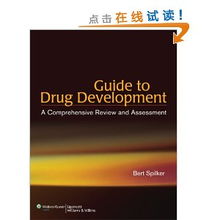Introduction: Are you a dedicated angler who dreams of reeling in the big ones? Whether you're a seasoned fisherman or a beginner looking to step up your game, mastering the art of catching heavy fish is a skill that requires patience, practice, and a few well-guarded secrets. In this article, we'll delve into the world of heavy fish fishing, offering tips and techniques that will help you hook into the big catches on a daily basis.
Choose the Right Gear Before you can start targeting heavy fish, you need the right equipment. Here's what you should consider:
a. Rod and Reel: Opt for a rod and reel designed specifically for heavy-duty fishing. Look for a rod with a strong backbone and a reel with a powerful drag system.
b. Line: Use a monofilament line with a breaking strength that can handle the weight of the fish you're targeting. For larger fish, consider using braided line for added strength and sensitivity.
c. Lures and Baits: Choose lures and baits that mimic the natural prey of the fish you're targeting. For instance, if you're fishing for catfish, use large worms or cut baits.
Understand Your Target Fish Knowing your target fish is crucial for successful heavy fish fishing. Research the habits, preferences, and feeding patterns of the species you're aiming to catch. This knowledge will help you choose the right location, time of day, and bait.
Choose the Right Location Find areas where heavy fish are known to congregate. This could be deep holes, river bends, or structure like rocks and logs. Use a fishfinder to locate schools of fish and determine the best spots to cast your line.
Timing is Everything Fish are most active during certain times of the day. Early morning and evening are typically the best times for heavy fish fishing. However, this can vary depending on the season and the specific species you're targeting.
Technique for Casting and Retrieval When casting, use a strong, accurate throw to cover as much water as possible. When retrieving, keep your pace slow and steady to allow the bait to sink and settle naturally. For heavy fish, a slower retrieval can often be more effective.
Patience and Sensitivity Heavy fish are often cautious, so it's important to be patient. Wait for the fish to bite rather than constantly reeling in. Use a sensitive rod to detect even the slightest tug or pull on the line.
Handling and Landing the Fish Once you've hooked a heavy fish, it's time to handle it properly. Here are some tips:

a. Keep the Line Taut: As the fish pulls, keep the line as taut as possible without yanking too hard, which can break the line.
b. Support the Fish: When bringing the fish to the boat or shore, support its weight to prevent injury to both the fish and yourself.
c. Use a Net: A good quality fish net can help you safely land a large fish without causing harm.
Safety First Always prioritize safety when fishing for heavy fish. Wear a life jacket if you're fishing from a boat, and be aware of your surroundings to avoid accidents.
Practice, Practice, Practice Like any skill, fishing for heavy fish takes practice. Spend time on the water, experimenting with different techniques and equipment until you find what works best for you.
Conclusion: Catching heavy fish is a rewarding challenge that requires dedication and a solid understanding of the art of fishing. By choosing the right gear, understanding your target fish, selecting the best location, and employing the right techniques, you'll be well on your way to reeling in the big ones on a daily basis. Remember to always practice safety and respect the fish you catch, and soon you'll be a master of heavy fish fishing. Happy fishing!












